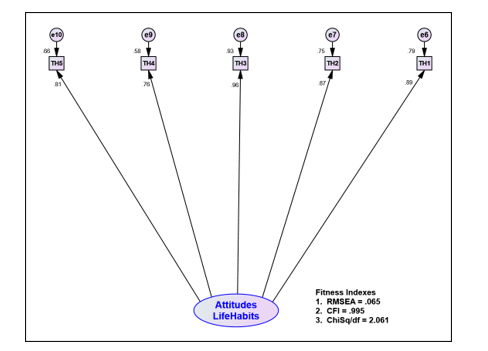
Abstract: There are two
ways to conduct Confirmatory Factor Analysis (CFA) using individual
confirmatory factor analysis or group confirmatory factor analysis based on the
measurement model. The number of items depends on the construct used in the
study and the measurement model analysis is conducted separately if the number
of items in the construct is more than four. Whereas, pooled CFA runs all
measurement models at the same time. Items with a factor loading value of less
than 0.6 are considered unimportant to the measurement of the construct and can
be discarded Chik, Abdullah, Ismail and Mohd Noor (2024). A total of 250 study samples were involved in this research. Data were
analyzed using the IBM-SPSS-AMOS (Structural Equation Modeling-SEM) version
24.0 program. Adjustment tests were conducted to ensure that the indicators
tested truly represented the constructs being measured and Confirmatory Factor
Analysis was conducted in this study as a prerequisite that must be met. The
study findings showed that all correlations between Rent Payment Methods,
Attitudes & Lifestyle Habits, Social Symptoms, Moral Collapse, Living Aid
and Rent Arrears Payment had values less than 0.85 (<0.85) among residents
of the Terengganu Family Development Foundation (TFDF)
Rural Flats. The combined results of confirmatory factor analysis of all
measurement models (Pooled CFA), proved that all constructs did not have a
strong relationship with each other to avoid the existence of multicollinearity
problems.
Keywords:
Terengganu Family Development
Foundation (TFDF), Confirmatory Factor Analysis (CFA), Pooled CFA
